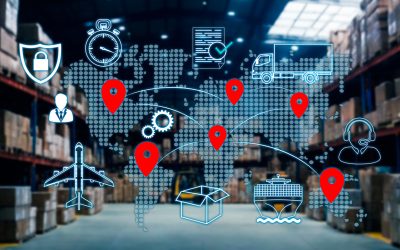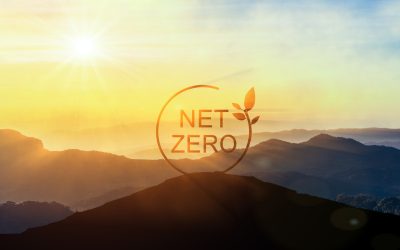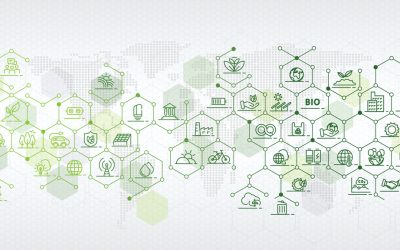
In recent years, the conversation surrounding sustainability in business has expanded beyond just internal operations to encompass the entire value chain. Companies are increasingly realising the importance of addressing not only their direct emissions but also those that occur upstream and downstream in their supply chains. While Scope 1, 2, and 3 emissions have garnered significant attention, there is another category that is gaining recognition for its impact on the environment: Scope 4 emissions.
Scope 4 emissions, also known as upstream and downstream emissions, refer to indirect emissions associated with a company’s activities that occur outside of its direct control but are related to its products or services. These emissions encompass everything from the extraction of raw materials and production processes to the distribution, use, and disposal of products. Despite their indirect nature, Scope 4 emissions can have a substantial impact on a company’s carbon footprint and overall sustainability efforts.
One of the key challenges in addressing Scope 4 emissions lies in the complexity of modern supply chains. Businesses often have limited visibility into the environmental practices of their suppliers and downstream partners, making it difficult to accurately measure and manage these emissions. However, ignoring Scope 4 emissions can undermine a company’s sustainability goals and expose it to reputational risks as stakeholders increasingly demand transparency and accountability.
To effectively manage Scope 4 emissions, companies need to adopt a holistic approach that encompasses their entire value chain. This includes:
1. Supply Chain Transparency: Companies must work closely with suppliers to gather data on emissions associated with the extraction, production, and transportation of raw materials. Implementing supply chain transparency initiatives and conducting regular audits can help identify areas for improvement and encourage suppliers to adopt more sustainable practices.
2. Product Lifecycle Analysis: Conducting a lifecycle analysis of products can provide valuable insights into their environmental impact at each stage, from manufacturing to end-of-life disposal. By understanding where emissions occur throughout the lifecycle, companies can identify opportunities to optimize processes, reduce waste, and minimize carbon emissions.
3. Collaboration and Innovation: Collaboration across industries and value chains is essential for driving innovation and accelerating the transition to a low-carbon economy. Companies can collaborate with suppliers, customers, and other stakeholders to develop and implement sustainable solutions, such as renewable energy sources, eco-friendly materials, and circular economy models.
4. Setting Science-Based Targets: To effectively mitigate Scope 4 emissions, companies should set science-based targets aligned with the latest climate science. These targets should not only address direct emissions but also include ambitious goals for reducing upstream and downstream emissions. By setting clear targets and tracking progress, companies can hold themselves accountable and drive meaningful change.
Scope 4 emissions represent a critical yet often overlooked aspect of business sustainability. Addressing these emissions requires a collaborative and holistic approach that extends beyond the boundaries of individual companies. By taking proactive steps to measure, manage, and reduce Scope 4 emissions, businesses can enhance their environmental performance, mitigate climate risks, and position themselves as leaders in the transition to a sustainable future.
References:
1. IPCC, 2014: Climate Change 2014: Synthesis Report. Contribution of Working Groups I, II and III to the Fifth Assessment Report of the Intergovernmental Panel on Climate Change [Core Writing Team, R.K. Pachauri and L.A. Meyer (eds.)]. IPCC, Geneva, Switzerland, 151 pp.
2. Giljum, S., et al. (2016). Identifying priority sectors and value chains for circular economy strategies in Europe. Environmental Science & Policy, 55, 133-140.
3. Weidema, B. P., et al. (2009). The Ecoinvent Database: Overview and Methodology. International Journal of Life Cycle Assessment, 13(1), 3-9.
4. UNFCCC. (2015). Paris Agreement. Retrieved from https://unfccc.int/sites/default/files/english_paris_agreement.pdf.
What are the 9 Planetary Boundaries and why do they matter?
The planetary boundaries framework, first introduced in 2009 by Swedish scientist Johan Rockström and his colleagues, updated in subsequent...
Scope 3 vs. Scope 4 Emissions in Business Sustainability: Understanding the difference
In the realm of business sustainability, understanding and mitigating greenhouse gas emissions have become paramount. Among the various categories...
Understanding Emissions Scopes: What are scope 1, 2 and 3 emissions?
Understanding and effectively managing greenhouse gas emissions is essential in Business Sustainability. Emissions are commonly categorised into...
Understanding Net Zero
In recent years, the concept of achieving "net zero" has gained significant traction in the realm of sustainability, particularly concerning...
Embarking on a Business Sustainability Journey: Key Steps to Get Started
In today's increasingly environmentally-conscious world, businesses are recognising the importance of integrating sustainability into their...
What is Business Sustainability? Building a Sustainable Future
Building a Sustainable Future: The Key Elements of Business Sustainability In today's world, the concept of sustainability has become more than just...






